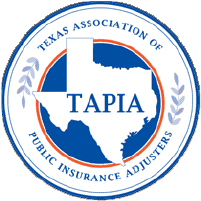Hail damage occurs when a storm produces hailstones that are large enough to cause damage to property. Hailstones can range in size from small pellets to large golf ball-sized chunks, and the larger the hailstones, the more damage they can cause. When hailstones fall from the sky and strike a surface, they can dent, crack, or break various materials, including roofing, siding, windows, and vehicles. The force of the impact can cause immediate damage, or it can weaken the material, leading to future problems. Hail damage is often difficult to detect from the ground, especially on roofs, so it’s important to inspect your property after a hailstorm to assess any potential damage.
Hail damage can be costly and inconvenient for property owners. It can lead to leaks in roofs, dents in vehicles, and cracks in windows, all of which require repairs. In severe cases, hail damage can even make a property uninhabitable until repairs are made. Understanding the potential impact of hail damage is crucial for property owners so they can take the necessary steps to assess and address any damage that occurs.
Key Takeaways
- Hail damage can cause dents, cracks, and other structural damage to vehicles and properties.
- Assessing hail damage involves inspecting the extent of the damage and determining the repair costs.
- Finding a qualified appraiser is crucial for accurately assessing hail damage and ensuring fair compensation.
- Documenting hail damage with photographs and detailed descriptions is essential for insurance claims.
- Negotiating with insurance companies may require providing evidence of hail damage and seeking professional assistance if needed.
- Repairing hail damage may involve paintless dent repair, panel replacement, or other specialized techniques.
- Preventing future hail damage can be achieved through protective measures such as installing hail-resistant roofing and car covers.
Assessing Hail Damage
Assessing hail damage can be a challenging task, especially for property owners who are not familiar with the signs of damage. It’s important to inspect all areas of your property that may have been affected by the hailstorm, including the roof, siding, windows, and vehicles. Look for dents, cracks, and other signs of impact on these surfaces. Keep in mind that some types of damage may not be immediately visible, so it’s important to thoroughly inspect each area.
For roofs, it’s best to hire a professional inspector who can safely access the roof and identify any damage. They will look for dents in metal surfaces, cracks in shingles, and other signs of impact. For vehicles, look for dents and dings on the body of the car, as well as cracks in the windshield and windows. For windows and siding, look for cracks and chips in the material. It’s important to document all signs of damage so you can provide evidence to your insurance company when filing a claim.
Finding a Qualified Appraiser
When it comes to assessing hail damage, finding a qualified appraiser is crucial for accurately documenting the extent of the damage. A qualified appraiser will have experience in assessing hail damage and will be able to provide a thorough and accurate assessment of the damage to your property. When looking for an appraiser, it’s important to do your research and find someone who is reputable and experienced in assessing hail damage.
You can start by asking for recommendations from friends, family, or neighbors who have dealt with hail damage in the past. You can also search online for appraisers in your area and read reviews from previous clients. Look for appraisers who are licensed and certified in their field, as this will ensure that they have the necessary expertise to accurately assess the damage to your property. Once you have found a few potential appraisers, schedule consultations with them to discuss their experience and approach to assessing hail damage. This will help you determine which appraiser is the best fit for your needs.
Documenting Hail Damage
| Location | Date | Severity | Extent of Damage |
|---|---|---|---|
| Denver, CO | May 15, 2021 | Medium | Roof, car, and window damage |
| Kansas City, MO | June 10, 2021 | High | Structural damage to buildings |
| Dallas, TX | April 5, 2021 | Low | Minor dents on vehicles |
Documenting hail damage is an essential step in the process of filing an insurance claim and getting the necessary repairs done to your property. Proper documentation will provide evidence of the extent of the damage and will help support your claim with your insurance company. When documenting hail damage, it’s important to take thorough and detailed photographs of all areas of your property that have been affected by the hailstorm.
Take close-up photos of any dents, cracks, or other signs of impact on your roof, siding, windows, and vehicles. It’s also helpful to take wide-angle shots that show the overall extent of the damage to each area. Be sure to take multiple photos from different angles to capture the full scope of the damage. In addition to photographs, it’s important to keep records of any repair estimates or invoices related to the hail damage. This documentation will help support your claim and ensure that you receive fair compensation from your insurance company.
Negotiating with Insurance Companies
Negotiating with insurance companies can be a daunting task, especially when it comes to filing a claim for hail damage. Insurance companies may try to minimize the amount they pay out for hail damage claims, so it’s important to be prepared to negotiate for fair compensation. When negotiating with your insurance company, it’s important to have thorough documentation of the hail damage to support your claim.
Present your insurance company with detailed photographs of the damage, as well as any repair estimates or invoices related to the repairs. Be prepared to explain the extent of the damage and how it has impacted your property. It’s also helpful to be knowledgeable about your insurance policy and what it covers in terms of hail damage. If you feel that your insurance company is not offering fair compensation for the damage, consider seeking legal advice or hiring a public adjuster to help negotiate on your behalf.
Repairing Hail Damage
Repairing hail damage is essential for restoring your property to its pre-storm condition and preventing further problems down the line. The specific repairs needed will depend on the extent of the damage and the areas affected. For roofs, repairs may include replacing damaged shingles or metal panels, as well as addressing any underlying structural issues caused by the hailstorm.
For vehicles, repairs may involve paintless dent removal or replacing damaged panels. For windows and siding, repairs may include filling in cracks or replacing damaged sections. It’s important to hire qualified professionals to make these repairs to ensure that they are done correctly and effectively. Be sure to obtain multiple repair estimates and choose a reputable contractor who has experience in repairing hail damage.
Preventing Future Hail Damage
Preventing future hail damage is an important consideration for property owners who live in areas prone to hailstorms. While it’s impossible to completely prevent hail damage, there are steps you can take to minimize the impact of future storms. For roofs, consider installing impact-resistant shingles or metal roofing that can better withstand hailstones.
For vehicles, consider parking in a garage or under a carport during hailstorms to protect them from damage. For windows and siding, consider installing storm shutters or impact-resistant materials that can help minimize the impact of hailstones. It’s also important to stay informed about weather patterns in your area and take precautions when severe weather is forecasted. By taking these steps, you can help protect your property from future hail damage and minimize the need for costly repairs.
If you’re dealing with hail damage to your property, it’s crucial to have a professional appraisal to ensure you receive fair compensation from your insurance company. In a related article on water damage appraisal, Loss Consulting provides valuable insights into the importance of hiring a public adjuster to handle water damage claims. Their expertise in insurance claim appraisal and public adjusting in Dallas makes them a trusted resource for property owners seeking fair and accurate assessments. For more information on their services, visit Loss Consulting.
FAQs
What is hail damage appraisal?
Hail damage appraisal is the process of assessing and documenting the damage caused by hail to a property, such as a vehicle or a building. This appraisal is typically conducted by a qualified appraiser or insurance adjuster to determine the extent of the damage and the cost of repairs.
Why is hail damage appraisal important?
Hail damage appraisal is important for determining the extent of damage to a property and for estimating the cost of repairs. This information is crucial for insurance claims and for ensuring that the property is restored to its pre-damaged condition.
How is hail damage appraisal conducted?
Hail damage appraisal is typically conducted by visually inspecting the property for signs of damage, such as dents, cracks, or other visible marks caused by hail. In the case of vehicles, the appraiser may also use special tools and techniques to assess the damage to the body and paint.
Who can conduct a hail damage appraisal?
Hail damage appraisal is usually conducted by qualified appraisers or insurance adjusters who have the necessary training and expertise to assess and document hail damage. It is important to hire a reputable and experienced professional to ensure an accurate appraisal.
What is the outcome of a hail damage appraisal?
The outcome of a hail damage appraisal is a detailed report documenting the extent of the damage, the estimated cost of repairs, and any other relevant information. This report is used for insurance claims and for determining the necessary repairs to restore the property to its pre-damaged condition.





